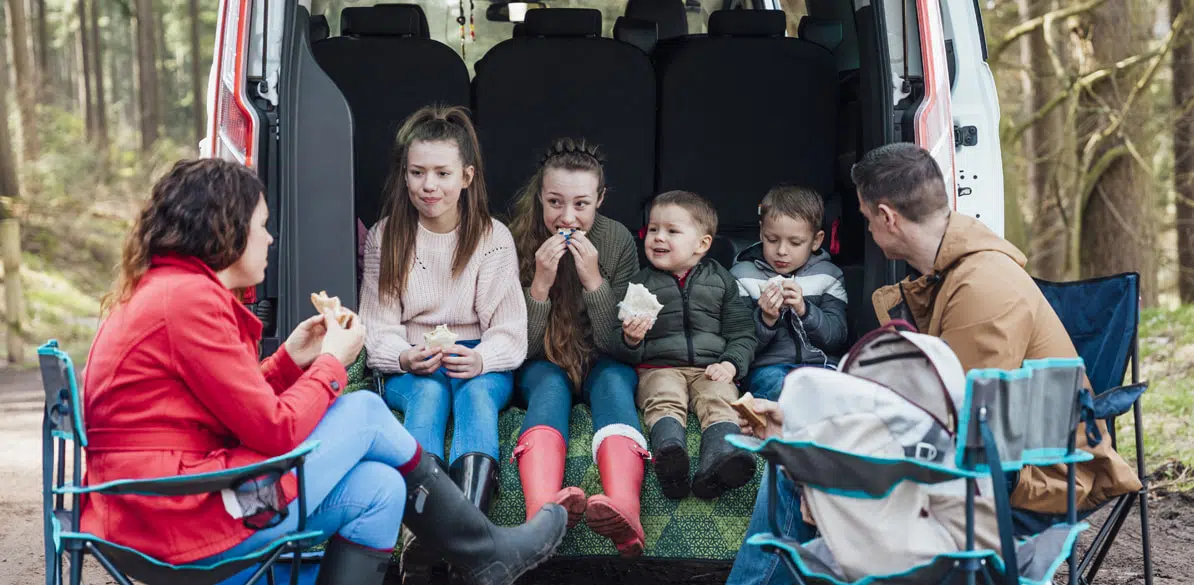How children should travel in vans

Vans are more and more well-equipped in terms of comfort and convenience for users; practically the only thing that differentiates them from cars is the space and, in a very positive way, the possibilities they offer users.
Therefore, the same van that during the week might be loaded with boxes, glass, construction material or anything else becomes the perfect means of transport for your family at the weekend, and especially for your children.
If you want to go on one of those unforgettable weekends, a van easily lets you load it up with bicycles, baby buggies and any other objects to give your children a fun day out.
But what about the children themselves? How should they be transported in a van?
What the law says in this regard
Before going into the subject of child restraint systems for carrying children, we need to look at the law, which the Directorate General for Traffic (DGT) changed relatively recently.
Specifically, the law that went into force on October 1, 2015, says that children under 135 cm tall must be seated in the rear seats of the vehicle.
This means that they cannot travel in the front seats unless all the rear seats are occupied by other children.
If this law is breached, the authorities can immobilize the vehicle and impose a fine of 200 euros on the driver.
But this law has its exceptions. Children are allowed to travel in the front seat:
• when the vehicle does not have rear seats (in the case of two-seaters or vans).
• when the rear seats are fully occupied by children 135 cm tall or less.
• when it is not possible to install the appropriate child restraint systems in the rear seats.
This means that if you have a van that only has front seats, since the rear is enabled for cargo, children must inevitably travel in the front seat.
Having clarified the fundamental aspect of the seat location, we are now going to look at child seats and their accessories that optimize the transport of children in vans.
Security systems and accessories
The ultimate safety system is the child car seat and among them you should choose one that is specifically approved for the anchoring system of your van, if it has one. The best system for the child seat, and for you, since its installation is quick and easy, is the ISOFIX system. The vast majority of child seats are already structurally compatible with this system. This article provides a detailed explanation of this safety system. Most of today’s vans already have it as standard in their rear seats.
There are also other accessories that can improve the safety of children in vans, even if they are not in motion. Taking into account the options offered by vans thanks to their space, you may have an additional bed installed. If so, a safety net is an essential feature and its installation is really easy: the upper part is fastened to the ceiling with two straps and the lower part is fixed in the same way to the base of the bed.
In this respect, it is very important that if you are also carrying cargo it is well secured. This is compulsory. Among the cargo size and dimension regulations subject to sanctions in the General Traffic Regulations, there is one that is classified as serious: “To drive a vehicle whose load could overload, fall totally or partially, move in a dangerous way or compromise the stability of the vehicle, without having the accessories that guarantee the adequate protection or conditioning of the transported load. The person responsible is deemed to be the owner of driver of the vehicle and the fine is 200 euros (according to Article 65.f of the LSV)”.
An example of this would be failing to properly secure any objects being transported, such as bicycles, snowboards, snow skis or water skis, with the consequent risk of them falling off and endangering other users of the highway network. If the van does not have a partition between the driver’s cabin and the rear area, because of the possibility of installing seats, we recommend installing a grille that separates both spaces. You must make every effort to avoid the chance of a loose object being thrown around in the event of sudden braking or impact.
Finally, remember that if you put the child in a child seat in the front passenger seat facing backwards, you must disable the airbags for this seat.
